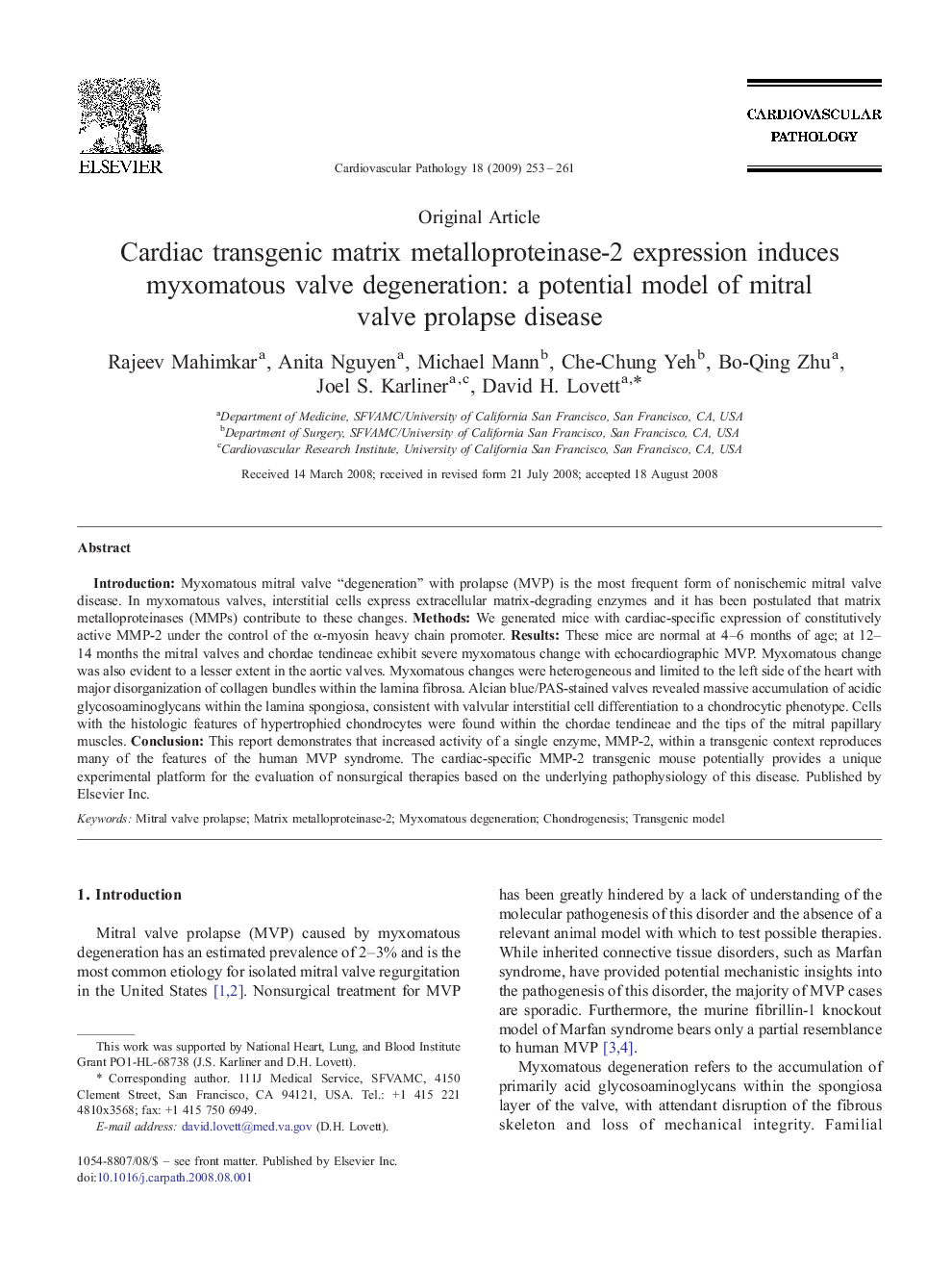| Article ID | Journal | Published Year | Pages | File Type |
|---|---|---|---|---|
| 2899286 | Cardiovascular Pathology | 2009 | 9 Pages |
IntroductionMyxomatous mitral valve “degeneration” with prolapse (MVP) is the most frequent form of nonischemic mitral valve disease. In myxomatous valves, interstitial cells express extracellular matrix-degrading enzymes and it has been postulated that matrix metalloproteinases (MMPs) contribute to these changes.MethodsWe generated mice with cardiac-specific expression of constitutively active MMP-2 under the control of the α-myosin heavy chain promoter.ResultsThese mice are normal at 4–6 months of age; at 12–14 months the mitral valves and chordae tendineae exhibit severe myxomatous change with echocardiographic MVP. Myxomatous change was also evident to a lesser extent in the aortic valves. Myxomatous changes were heterogeneous and limited to the left side of the heart with major disorganization of collagen bundles within the lamina fibrosa. Alcian blue/PAS-stained valves revealed massive accumulation of acidic glycosoaminoglycans within the lamina spongiosa, consistent with valvular interstitial cell differentiation to a chondrocytic phenotype. Cells with the histologic features of hypertrophied chondrocytes were found within the chordae tendineae and the tips of the mitral papillary muscles.ConclusionThis report demonstrates that increased activity of a single enzyme, MMP-2, within a transgenic context reproduces many of the features of the human MVP syndrome. The cardiac-specific MMP-2 transgenic mouse potentially provides a unique experimental platform for the evaluation of nonsurgical therapies based on the underlying pathophysiology of this disease.
